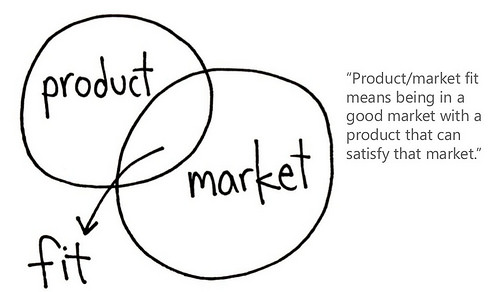How to find ‘product – market fit’
Any successful business needs to follow two simple steps 1) Build a ‘product’ a sufficient number need or want (08); and 2) To sell enough of this product to be profitable (10).
“The #1 company-killer is lack of market.”
Marc Andreessen
However, the two easy steps are actually not that simple.
As in many things in life, the key to navigating the complexity is finding simplicity. While everyone is searching for the next BIG idea, the small and seemingly too simple ideas solving inherent problems or just making the complex easy are missed.
A product offering value and with potential sales globally is more likely to become a solid growth business, than a product targeting a small local geographic area and/or niche segment.
Understanding the population size, likely customer levels and spend is critical in measuring potential. As is a solid product and sales strategy.
Today we thought we’d share our perspective on product – market fit.
1. Igniting ideas
Building on an understanding of the market and where opportunities exist (06) and other ways to find innovation (12), let the ideas flow. Do not hold back, everyone thinking. Then start to prioritise the ideas into those likely impactful small ideas, and a few BIG IDEAS needing more planning. Then start building prototypes, concepts et cetera. No procrastination seeking perfection, please.
2. Market potential
Use secondary market data and robust tailored survey and other data to measure the ‘category’ size, usage of similar products, frequency of purchase and potential. Is there an unmet need? Which geographic markets offer more potenial, or is there consistent global demand? Are there priority psychological, behavioural and/or demographic segments (eg defined via cluster analysis) – early adopters, unique needs, those willing to spend more?
3. Strategy refinement
What is the optimal path to market? Allow likely customers to interact with the product concept(s), e.g. using qualitative research. Do they like it? Where are their reservations – security, price, value, complexity? What is the best way to resolve these? Product refinement and/or a FAQ on the website? Explore selling models and how to optimise the value proposition. Brand testing, distribution expectations, how to scale etc, etc.
4. Launch agility
User-centred feedback and research is critical to test, refine and flag the ideas that are working and dumping poor performing ideas. Defining ideas, building and launching them, evaluating, learning, iterating and impacting behaviour change. Implement, learn and continuously evolve. Gain feedback, tweak with limited delay, monitor awareness, interest, conversion and client satisfaction, word-of-mouth and suggestions to improve … ITERATE!
Pretty simple isn’t it?
So, the two steps to building the next $1Billion ‘Unicorn‘ business are 1) You will need a product (or service) a large number need or want; 2) You will need to sell $1Billion of this product. However, the two easy steps are not that simple.
How we view the role of market research needs to change. Rather than seeking a silver bullet, market research should be used to help find a widely held unresolved problem or unmet need or want, that is universally true, beyond minuscule niches. Whittling down the category to the fundamental wrong, that needs to be made right. Then developing the product and it’s selling to an essence to ignite innovation, build better products and guide how they are sold.
Finding an optimal ‘product – market fit’ is critical to sustaining and growing a business. Rather than an ‘entrepreneur’ blaming the market or the CEO wishing for the bouyant times of past, seek, and ever evolve, a product fulfillng an unmet need or want of a significant market demand. A unique business model rethinking an established category (e.g. delivery, quality, pricing etc, etc). Be aware of the market, ever with a beginner’s mind.
Originally sent via our weekly ezine. Read here.




